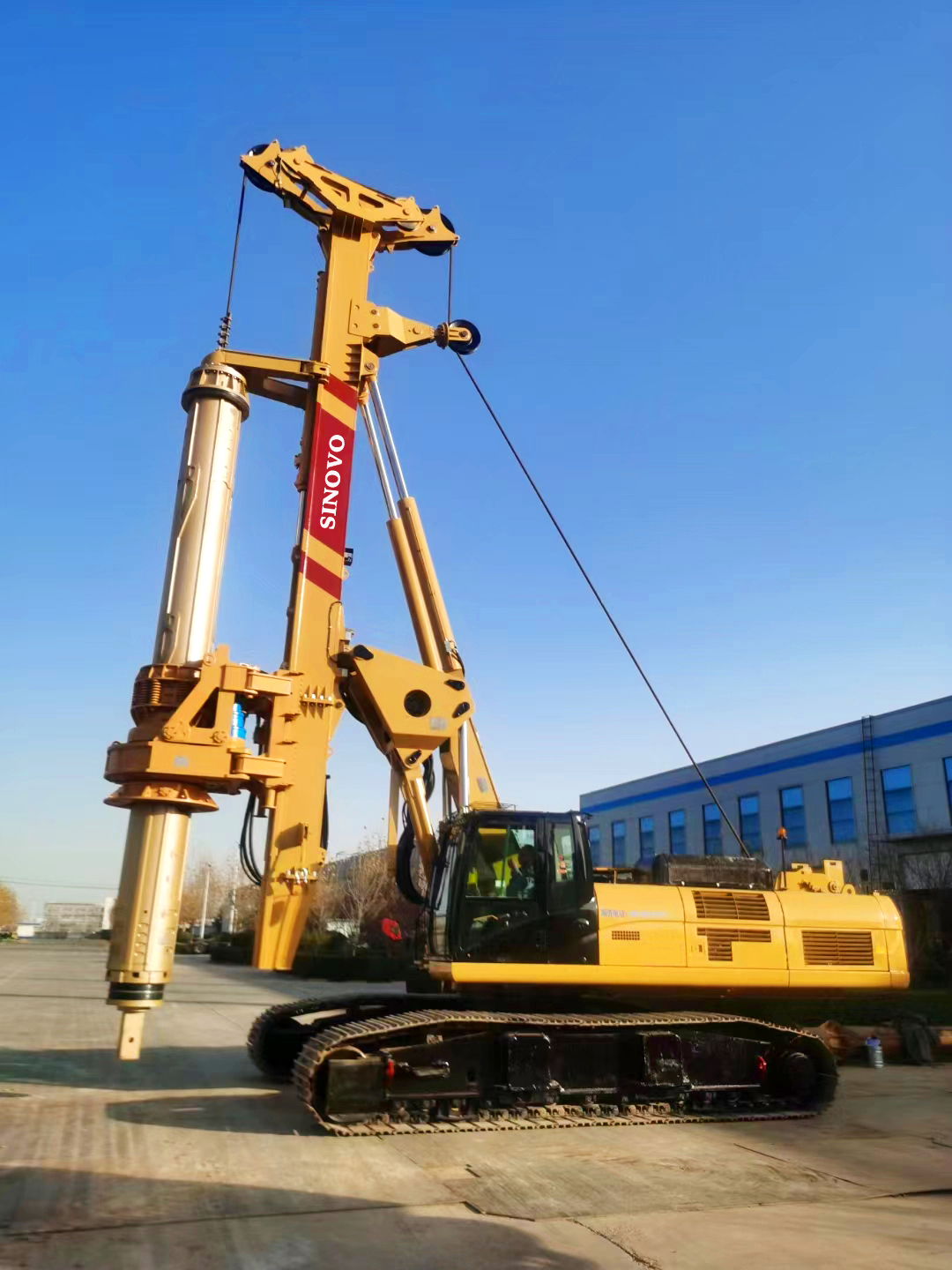With the rapid development of world‘s infrastructure construction and the continuous innovation of construction technology, in more and more foundation construction projects that are restricted by narrow sites, mechanical noise control, mud pollution, and complex geological conditions, rotary drilling rigs have become the core equipment of pile foundation projects with their high efficiency, environmental protection, and strong adaptability. Pile quality control Its construction method has shown a significant development trend in the fields of super-large-diameter bridge piles, small-diameter piles for civil engineering, hard rock formations, and special pile types, driving the industry towards intelligence, electrification, multi-functions, and greening. This article will analyze from four major directions.
1. Construction method of bridge piles with super-large aperture and deep hole Development trend: technological breakthroughs in cross-sea bridges and deep-water foundations Super-large-diameter bridge piles are the frontier of rotary drilling rig application, especially suitable for pile foundation construction of cross-river, cross-sea bridges and deep valley bridges. For example, the diameter of the main pier pile foundation of the Sutong Yangtze River Highway Bridge is 2.5~2.85 meters, and the depth exceeds 120 meters. The high-power rotary drilling rig combined with PHP high-quality mud wall protection technology solves the problem of easy collapse of silt sand and pebble layers. Technical innovation direction:
1.1 High-torque power head and ultra-long drill rod: driven by a dual-speed reducer or a low-speed high-torque hydraulic motor to improve the hard rock crushing capacity, and use 6 special drill rods to achieve deep hole operations over 80 meters.
1.2. Intelligent construction control: integrated GPS positioning, laser radar sensing and automatic navigation technology to achieve accurate positioning and path planning of pile positions, reducing manual errors.
1.3. Environmentally friendly mud circulation system: by adding a mud circulation treatment system, the static pressure wall protection mud prepared by bentonite can reduce the mud consumption to 20%~30% of the pile hole volume, reducing environmental pollution.
2. Construction method of small-diameter piles for civil engineering Development trend: efficiency and cost optimization In densely populated urban areas, civil engineering pile foundations are limited by small sites, noise control and pile quality requirements, and small-diameter piles (pile diameter 500~1500mm) have become the mainstream. The rotary drilling rig has achieved breakthroughs through the following technologies:
2.1. Modular drilling tool design: Quickly replace drill bits and drill rods to adapt to different geological conditions. A single machine can cover a variety of pile diameter requirements and reduce equipment purchase costs.
2.2. High-precision hole-making technology: Use a visual control system to monitor the verticality and diameter of the pile hole in real time, and control the deviation within ±50mm to improve the quality of the pile.
2.3. Energy-saving and consumption-reducing technology: Use the latest electronic control proportional technology to optimize the hydraulic system and engine energy efficiency, combined with low-emission design, so that the construction efficiency of small-diameter piles is increased to 3 times that of traditional methods.
3. Construction methods for hard rock formations Development trend: Drilling and milling combination and efficient rock breaking technology Hard rock formations (such as granite and sandstone) pose severe challenges to the wear and efficiency of rotary drilling rigs. Current technical paths include:
3.1. Down-the-hole drilling and lead-in assistance: pre-drilling and lead-in holes in hard rock areas to reduce subsequent rotary drilling resistance and reduce drill tooth loss. For example, using a honeycomb-shaped dense lead-in hole arrangement to improve crushing efficiency. 3.2. Special drilling tool research and development: Develop rock-embedded drill bits and multi-stage reamer, combined with high-frequency impact technology, to achieve a drilling efficiency increase of more than 40% in medium-weathered rock formations.
3.3. Intelligent monitoring system: Use sensors to monitor drilling pressure, speed and torque in real time, dynamically adjust parameters, reduce the damage of hard formations to the drilling rig during construction, avoid equipment overload and extend service life.
4. Construction methods for special pile types Development trend: Complex geology and customized needs drive innovation Special pile types (such as expanded bottom piles, inclined piles, and special-shaped piles) are widely used in high-rise buildings and special structures. The core of their construction methods lies in process adaptability and equipment flexibility: 4.1. Expanded bottom pile construction: Through water drill cutting and block breaking technology, an expanded head structure is formed at the bottom of the pile. For example, the Chongqing Raffles Square project adopts a step-by-step hole expansion method, with a maximum expanded bottom diameter of 9.4 meters, which significantly improves the bearing capacity of the pile foundation.
4.2. Inclined pile guidance technology: Combined with a laser guide and an adjustable angle drill rod, the inclination angle can be precisely controlled, which is suitable for slope support and wharf pile foundation projects.
4.3. Special-shaped pile hole formation: Develop polygonal drilling tools and retractable arm structures to meet the construction needs of complex pile types such as underground continuous walls and interlocking piles.
Conclusion The future of rotary drilling rig construction methods will deeply integrate intelligent, modular and green technologies.
In the field of ultra-large-diameter bridge piles, breakthroughs in deep water and rock formation challenges will further expand its application boundaries; the refinement and efficiency of small-diameter piles for civil engineering will reshape the urban infrastructure pattern; and the technical innovation of hard rock formations and special pile types demonstrates the high adaptability of equipment and processes. With the introduction of new materials, the Internet of Things and big data technologies, the rotary drilling rig method is expected to achieve a leap from “single equipment” to “full-process intelligent construction system”, providing a Chinese solution for global infrastructure.
Post time: Mar-06-2025


